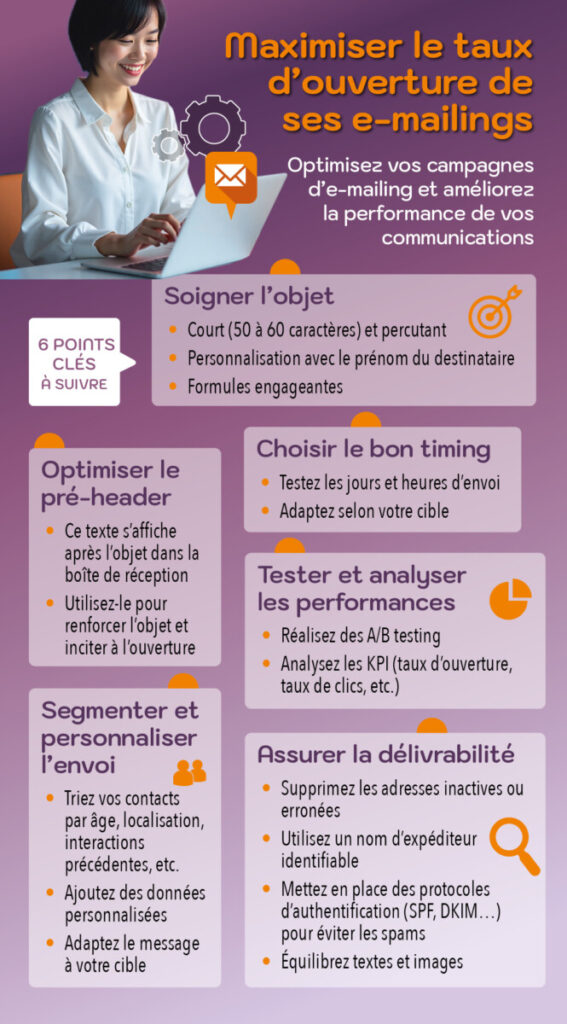E-mailing is an essential pillar of any communications and marketing strategy, but it can't be improvised. To maximise the impact of your campaigns and increase their open rate, here are six key points to consider.

1. Taking care of the object
- Clear and concise short (50-60 characters) and punchy.
- Customisation Including the recipient's first name can improve engagement.
- Curiosity and urgency use engaging formulas ("Don't miss out on this offer!", "Last chance!").
- Avoid spam words exclude terms such as "free of charge, "win, "exceptional offeretc.
2. Optimising pre-header text
- This text is displayed after the subject in the inbox.
- Use it to reinforce the object and encourage openness.
- Examples: "Discover our tips to boost your productivity", "A special gift awaits you".
3. Choosing the right timing
- Test the delivery days and times (generally Tuesday and Thursday mornings work well).
- Adapt to your target audience:
B-to-B: weekdays, office hours.
B to C: evenings and weekends can be more effective.
- Use intelligent sending based on subscriber behaviour.
4. Segment and personalise the mailing
- Precise targeting: tailor the message according to interests, behaviour and purchase history.
- Advanced segmentation: sort your contacts by age, location, previous interactions, etc.
- Name and preferences: add personalised information ("Hi Marie, here's an offer for you").
Read also
5. Maximise deliverability
- Check your list: delete inactive or incorrect addresses.
- Use an identifiable sender name: prefer "Julie from [Name of your company]" to a generic address.
- Authentication: implement authentication protocols (SPF, DKIM, DMARC) to avoid spam or phishing.
SPF (Sender Policy Framework)
📌 Purpose: to check that the email is sent from an authorised server.
👉 It defines a list of approved servers to send emails on behalf of a domain.
DKIM (DomainKeys Identified Mail)
📌 Purpose: to guarantee the integrity of the message by adding a cryptographic signature.
👉 DKIM signs the email with a private key and the recipient can verify this signature with a public key stored in DNS.
DMARC (Domain-based Message Authentication, Reporting, and Conformance)
📌 Objective: define a policy for managing SPF and DKIM non-compliant emails.
👉 It allows you to specify to mail servers how to handle unauthenticated emails.
- Balance text and images: too many images or links can send the e-mail into spam mode.
6. Test and analyse performance
- A/B testing: test different objects, senders and sending times.
- Analyse KPIs:
📈 Opening rate (ideally > 20%)
🖱 Click-through rate (CTR)
🔄 Churn rate
- Adjust according to the results obtained.






